Symptoms
Balance Problems

Balance problems can make you feel as though you're going to fall. You feel like you've lost touch with your feet and legs. Proper balance is crucial so we can move confidently. You might not realize it, but several body parts, including the bones, brain, and inner ear, work together to ensure balance. Any issues related to these systems can impact your sense of balance. Pay attention to potential triggers if you often feel you're spinning, weak at the knees, or unsteady. Take note of how it occurs, too—whether the loss of balance is sudden or gradual. A rapid loss of balance can indicate a serious problem. On the other hand, the cause may be something minor, such as dehydration, or not requiring urgent medical care.

Key Services:
Carpal Tunnel
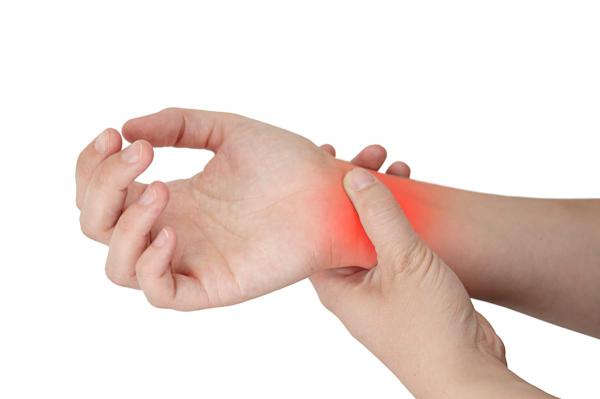
The carpal tunnel is a narrow passageway in the wrist, connecting the median nerve and tendons to the hand and forearms. It consists of different parts. This includes the ligament at the top, the semi-circle carpal bones at the bottom and the sides of the tunnel, and the median nerve and tendons inside the tunnel. The median nerves allow us to feel sensations in our fingers, except for the tiny finger, and are connected to the nerve roots in the neck, while the tendons, or flexor tendons, make it possible for the fingers and thumb to bend. The carpal tunnel may be small, but conditions involving it can cause severe inconvenience or mobility problems if not diagnosed and treated immediately.
Key Services:
Chronic Pain

Chronic pain is pain that persists over 12 weeks and sometimes goes on for years. The pain can be recurring or consistent, and it can be felt anywhere in the body. It can affect your daily function and your ability to take care of yourself. Because of this, chronic pain can also result in stress, anxiety, and sleeping difficulties, which can aggravate the pain. The cycle can be tough to break, so it’s important to seek professional advice and guidance. The discomfort can occur in your head, neck, back, and muscles, among many others. Chronic pain can be due to a long-term illness or injuries that change the body. The changes remain in place even after healing, leaving you in pain. In some instances, it is due to psychological factors.
Key Services:
Complex Regional Pain Syndrome (CRPS)

CRPS is known as the world’s most painful incurable condition causing intense burning, stinging or tearing sensations, often deep inside an affected limb.
Experts believe that CRPS occurs because of dysfunction in your central or peripheral nervous systems causing an overreaction to pain signals that your nervous system can’t shut off. Individuals may feel pain from stimuli that are not usually painful such as from a breeze or something lightly touching the skin. Symptoms persist long after the original injury has healed and may also be perceived in a larger area than the original injury.
This hypersensitivity to pain may start within four to six weeks after an injury, fracture or surgery, however, it may develop without trauma too. Fatigue, lethargy, tiredness, and weakness often result from inflammatory and/or immune reactions in the central and peripheral nervous systems that repeatedly misfire the pain pathways to, from and within the brain.
Type I CRPS occurs without nerve damage and used to be called Reflex Sympathetic Dystrophy while the more common Type II CRPS occurs after nerve damage in 90% of cases. Other symptoms of CRPS include skin swelling, stiffness, sensitivity to pressure, temperature, texture and colour changes compared to the non affected side.
While medications like gabapentin may be used in treating the neuropathic pain, the “brain-induced pain” may respond to neuromusculoskeletal rehabilitation exercises such as guided motor imagery, mirror therapy and desensitization therapies that calm the nervous systems and improve aerobic training and stress loading so patients may return to normal activities.
Key Services:
Concussions
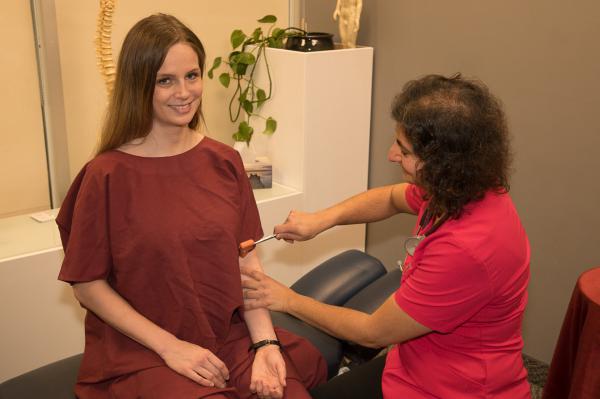
A concussion is a type of brain damage that interferes with normal brain function. It can be due to direct trauma from accidents, injuries, or sports activities. Often, concussion is linked to loss of consciousness, but this isn't always true. Symptoms don't always involve loss of memory. They can be mild and may not be noticeable right away, but they can persist for days or weeks. Examples are headaches, nausea, and drowsiness. Even so, concussions shouldn't be ignored. It's best to see a healthcare provider as soon as possible because succeeding concussions may have permanent effects if the effects of the first one aren't addressed.
Key Services:
Cubital Tunnel

The cubital tunnel is a narrow passageway containing muscle, ligament, and bone. It is protected by tissue and is located under a bump of bone inside the elbow. The ulnar nerve, which allows us to feel our little finger and half of our ring finger, passes through the cubital tunnel. The bony bump you feel on your elbow is called “the medial epicondyle,” also referred to as “the funny bone,” and is the most vulnerable part of the ulnar nerve. The medial epicondyle is so close to the skin that bumping it can lead to a shock-like sensation, similar to the discomfort that an inflamed cubital tunnel or cubital tunnel syndrome can cause.
Key Services:
Fatigue

We all feel tired sometimes, but fatigue is an entirely different story. It occurs when a person constantly feels tired or weak. It can happen to anyone and is a symptom rather than a condition. Even so, it should not be taken lightly, as it can indicate a medical issue. Fatigue can lead to sleeping difficulties, dizziness, sore muscles, impaired judgment, and irritability. It can be due to a person’s lifestyle, a workplace-related issue, or a medical cause. Fatigue can be tough to diagnose because it comes with several different symptoms. Your healthcare provider may perform a physical exam or run tests, such as blood tests, to find out if you’re fatigued. Treatment plans can consist of making lifestyle changes or undergoing procedures to address underlying medical issues.
Key Services:
Golfer's Elbow

Golfer's elbow causes pain on the inside part of your elbow, called “medial epicondylitis.” It occurs when the muscles connecting the bony bump and the inside of the elbow get injured. The pain can reach your wrist and forearm since the tendons are linked to the muscles in the forearm. Those engaging in sports that require repetitive use, twisting, and gripping of the wrists are at an increased risk of developing golfer's elbow. The pain can be felt when a person is moving, but it doesn't have to interfere with one’s daily activities. Receiving proper treatment can eliminate the pain, strengthen the muscles and tendons, and keep the issue from occurring again.
Key Services:
Healthy Aging

Various factors contribute to healthy aging. And the good news is that many of them are within our control. Healthy living is crucial to maintaining independence and quality of life as you age. It also promotes positive well-being between family members. But it is a continuous process that requires commitment and discipline. Ensuring physical activity is one key to living longer and healthier. Making smart food choices can also help support healthy aging. Maintaining a good night's sleep stimulates memory and contributes to a good mood, so improving sleep quality is essential for staying healthy for a long time. Avoiding harmful habits, such as smoking and excessive alcohol intake, can also help make your older years more pleasant and comfortable.
Key Services:
Memory Loss (traumatic or with aging)

Memory loss is the inability to recall memories or one or more events. This can be temporary, but it can also worsen over time, depending on the cause. Severe cases may also interfere with a person's daily functions. Aging and trauma are two potential causes of memory loss. As you age, you may have a hard time understanding or memorizing materials. On the other hand, trauma from childhood can also result in memory decline as you age, according to a study. Adverse events, such as natural disasters, deaths in the family, or a parent's divorce, may lead to stress and depression and contribute to memory loss. The effects, however, can be subtle and not easily noticed during a person's day-to-day activities.
Key Services:
Migraines & Headaches

A migraine is a common condition that causes moderate to severe headaches on one side of the head. It usually affects adults and is more common among women than men. An attack can last from a few hours to a few days, occur rarely, or recur several times a month. Symptoms include sensitivity to light or sound, changes in speech, temporary vision loss, and feeling sick. The exact causes of migraines remain unclear, but several risk factors are linked to them. Hormonal changes, for instance, are connected to triggers among women. Hormonal medications, stress, poor sleep, and a diet rich in processed, cheesy, and salty foods are also among the potential triggers.
Key Services:
Morton's Neuroma
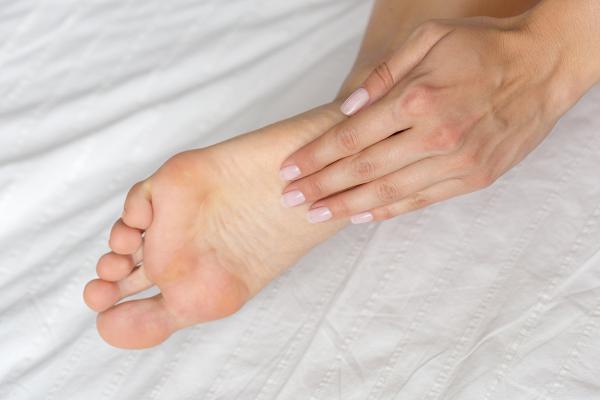
Morton's neuroma, or intermetatarsal neuroma, occurs when the tissue around a nerve in your foot gets injured or damaged and thickens as a result. It usually affects the nerves between the third and fourth toes, in the ball of the foot between the metatarsal bones, hence the term “intermetatarsal.” Some symptoms are manageable and can be treated at home. Among the top symptoms is feeling as though you're standing or walking on a marble on the front part of your foot, or forefoot. The thickened tissue can be painful and may also sting or feel numb. Morton's neuroma has been linked to wearing poor-fitting or high-heeled shoes. For these people, switching to more comfortable footwear provided relief. Some cases, however, may warrant surgery.
Key Services:
Muscle Spasms & Cramps

Muscle spasms and cramps are sudden muscle movements. They can affect one or several muscles and can be due to several potential causes. Often, the involuntary movements aren't serious and don't require immediate medical attention. They're very common and can affect any body part. However, they're typically noticed on the hands, arms, and feet, among many others. Probable causes include anxiety, stress, and a lack of exercise. Some are also more likely to experience them, such as athletes, seniors, pregnant women, and those dealing with obesity. In addition, having health conditions may make a person more vulnerable to muscle spasms and cramps. Home remedies, such as massages and cold compresses, can ease the cramps.
Key Services:
Neck & shoulder pain
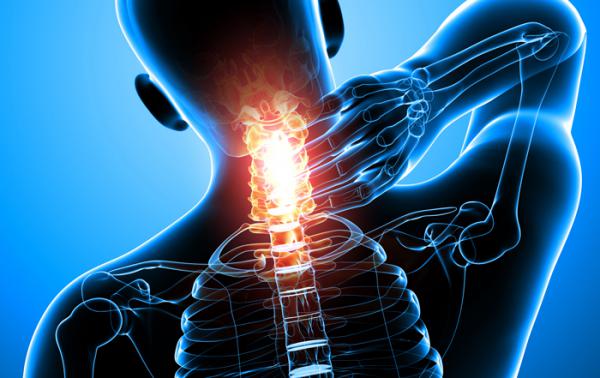
It is possible for neck and shoulder pain to occur at the same time, and it frequently results from underlying medical conditions and a variety of other factors, such as injury, muscle strain, and poor posture. Its common symptoms are aching, numbness, sharp pain, stiffness, and tingling in the arms and hands. While neck and shoulder pain will go away on its own, doing some stretching exercises can help treat it. However, it’s best to see a doctor if your neck and shoulder pain is causing you significant pain that persists or returns after getting better. In some cases, neck and shoulder pain can be an indication of a heart attack or a stroke; these conditions require immediate help.
Key Services:
Neuropathy
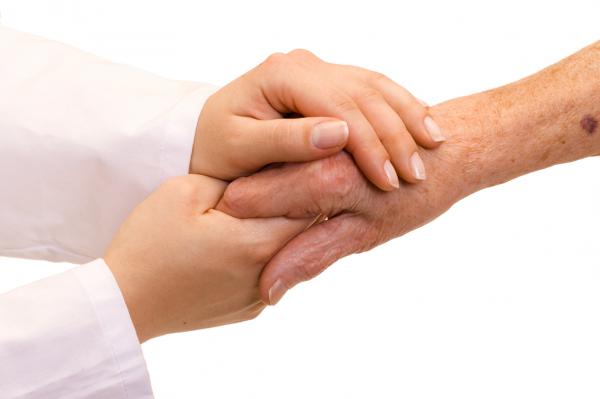
If you are experiencing numbness or tingling in your hands or feet, weakness, muscle cramping, shooting pains, or digestive issues, neuropathy could be to blame. Left untreated, this condition can lead to loss of sensation, chronic pain, disability, and amputation if untreated; there are multiple types of neuropathy including autonomic, focal, and peripheral types - each with its own causes, symptoms, and treatments.
Autonomic neuropathy involves any condition which affects automatic or involuntary functions in your body, including blood pressure, bladder function, digestion, heart rate, and temperature regulation. Focal neuropathy occurs when one nerve or more is affected suddenly with severe pain, weakness, or loss of sensation; Peripheral neuropathy results when nerves that connect your brain and spinal cord with other parts of the body become compromised and damaged - such as blood vessels carrying messages between brain and spinal cord and rest of body are damaged as a result.
If you detect early symptoms of nerve damage or are diagnosed with certain medical conditions like kidney disease, poor blood circulation or an underactive thyroid, it's essential that you seek medical advice immediately. Neuropathy treatments typically aim at relieving its root cause such as changing medications or increasing vitamin intake; lifestyle modifications such as eating healthily, regular physical activity, and forgoing smoking and alcohol consumption can reduce the likelihood of neuropathy developing further.
Key Services:
Numbness & Tingling

Numbness and tingling are usually characterized as unusual sensations or feelings of “electricity” running through the affected area, such as the arms, feet, hands, and legs. They can be caused by a variety of factors, including falling asleep on your arm, standing or sitting in one position for a long time, poor circulation, or nerve damage. Some medical conditions, such as migraines, neuropathy, seizure disorders, and strokes, also produce numbness and tingling as symptoms. In some cases, numbness and tingling can indicate a serious injury or condition. Get urgent medical care if you start having vision problems, slurred speech, a loss of control over your bowels, or an injury to your back, neck, or head.
Key Services:
Plexopathies

Plexopathies refer to a group of disorders affecting the plexus, which is a network of nerves that branches off from the spinal cord and supplies sensation to the upper and lower limbs. They are the result of a variety of factors, including compression, injury, inflammation, and damage to the plexus nerves. While the symptoms of plexopathies can vary depending on the severity of the nerve damage, their primary symptoms are numbness, pain, weakness, and tingling in the affected area. The most common types of plexopathies are brachial plexopathy, lumbar plexopathy, and sacral plexopathy. Plexopathies are treated depending on the cause and purpose. Medications may be recommended to relieve pain and inflammation, while surgery may be performed to remove tumors or repair nerve damage.
Key Services:
Poor Circulation & Lymphedema
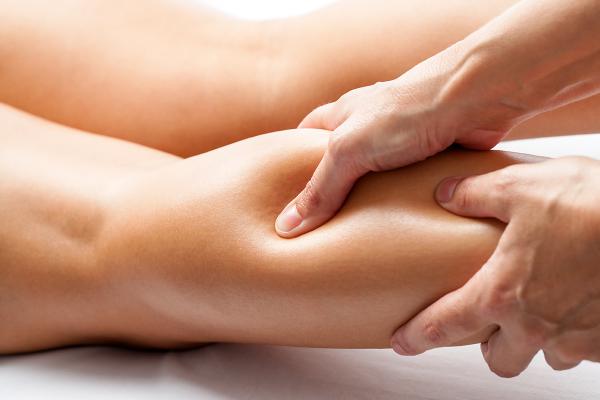
Poor circulation and lymphedema are related medical conditions that impact the body’s fluid flow. Poor circulation happens when the blood vessels that carry blood to the limbs become blocked or narrowed. People who are overweight and are 40 years old or older are more likely to have poor circulation. There are several different causes of poor circulation, and these include blood clots, high blood pressure, and varicose veins, among others. Its common symptoms are blue skin color, chest pain, cold fingers or toes, numbness, muscles that feel weak when you walk, and veins that bulge. Lymphedema, on the other hand, is swelling that happens when there’s a buildup of lymphatic fluid in the tissues. It typically affects the arms or legs but can also occur in the abdomen, chest wall, neck, and genitals. The most common causes of lymphedema are heart conditions, surgery, and trauma. While swelling is the most common symptom, other lymphedema symptoms you may notice are puffy or red skin, a feeling of burning or itching, and noticeably thicker skin.
Key Services:
Pregnancy (Pre-natal and Post-natal care for mothers and infants)

There are many health issues that can arise during pregnancy, such as backaches, fatigue, indigestion, leg cramps, morning sickness, and nosebleeds. These issues range from mild discomfort to more serious complications, including depression, high blood pressure, preeclampsia, and miscarriage. This is why prenatal and postnatal care are important. Prenatal care includes checkups and prenatal testing, which help keep the mother and her baby healthy. Prenatal care can be provided by obstetricians, gynecologists, family practitioners, certified nurse-midwives, and other healthcare professionals who specialize in pregnancy and childbirth. Postnatal care, on the other hand, involves getting adequate rest, proper nutrition, and vaginal care. It may also include education for the mother and her family regarding breastfeeding and postpartum mental health.
Key Services:
Progressive Weakness

Progressive weakness refers to the condition in which a person experiences a gradual loss of strength or a compromised ability to move their muscles over time. It is sometimes called “muscular weakness,” “reduced muscle strength,” or “weak muscles.” It can affect various parts of the body, primarily the arms, face, feet, hands, and legs. Many health conditions can cause progressive weakness, such as autoimmune diseases, electrolyte imbalances, neuromuscular disorders, and thyroid conditions. Stroke, chronic fatigue syndrome, and prolonged bed rest may also cause progressive weakness. Treatment for progressive weakness will depend on its underlying cause and the severity of the symptoms. Some of the most common treatment options are physical therapy, occupational therapy, medication, dietary changes, and surgery.
Key Services:
Restless Leg Syndrome
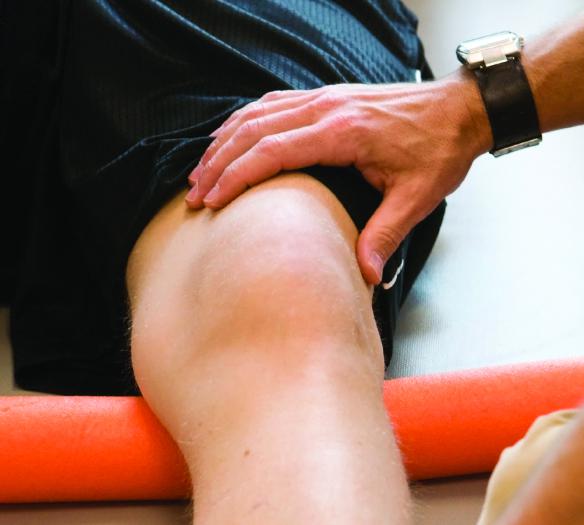
Restless legs syndrome (RLS) is a neurological condition that causes an irresistible or uncontrollable urge to move the legs. It is also known as “Willis-Ekbom disease,” which usually happens at night when a person is sitting or lying down. While the exact cause of RLS is not fully understood or known, several factors are believed to contribute to this condition. These include genetics, iron deficiency, medications, chronic diseases, pregnancy, and certain lifestyle factors. RLS tends to run in families, meaning that parents with RLS can pass it down to their children. Lifestyle factors like alcohol and caffeine consumption, on the other hand, may increase RLS symptoms in some people. Fortunately, some RLS symptoms can be treated by taking iron supplements, making some lifestyle changes, and trying moderate or regular exercise.
Key Services:
Scars & Fasciitis

Scars and fasciitis are two different medical conditions that affect various parts of the body. Scars are marks that are left on the skin after an injury or wound has healed, while fasciitis happens when the fascia becomes inflamed or irritated. This leads to discomfort and pain in the affected area. The fascia is a thin layer of connective tissue covering and supporting the bones, muscles, and organs in the body. While scars and fasciitis are distinct from each other, they can sometimes be related, as scars can cause fasciitis if they form over a joint or muscle, which can lead to inflammation of the fascia. Similarly, surgery to treat fasciitis can result in scarring as part of its healing process.
Key Services:
Sciatica and disc problems

Sciatica is a medical condition that causes pain in the lower back and legs. It is often caused by inflammation or irritation of the sciatic nerve, which runs from the lower back down to the legs. A herniated or displaced disc is among the most frequent causes of sciatica. It can occur in any part of the spine, but it often occurs in the lower back. It can result in numbness, pain, or weakness in the arm or leg. Aside from a herniated disc, risk factors for sciatica include age, obesity, occupation, and prolonged sitting. Furthermore, other disc problems that can cause sciatica are degenerative disc disease, which happens when the disc in the spine becomes stiff and brittle, and spinal stenosis, which is characterized as the narrowing of the spinal canal that puts pressure on the nerves. Treatment for sciatica and disc problems may include pain medication, physical therapy, and surgery.
Key Services:
Tarsal Tunnel
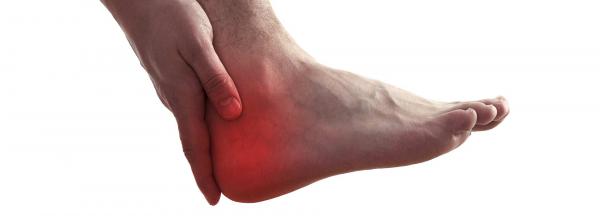
The tarsal tunnel is a narrow passageway situated on the inside of the ankle. It contains several structures, such as the posterior tibial nerve, arteries, tendons, and veins, that help in the movement of the foot and ankle. However, when the tibial nerve is compressed or damaged, it can lead to tarsal tunnel syndrome. People who have this condition may experience pain, numbness, tingling, or weakness in the feet. It’s likewise common to feel sharp, shooting pains and a burning sensation inside the ankle or in the sole. And these symptoms can worsen during or after physical activities like exercising, walking, or standing. Tarsal tunnel syndrome symptoms, fortunately, can be managed with home remedies, such as getting enough rest, using ice packs, elevating the foot, and taking medications. However, in severe and long-term cases, surgery may be performed.
Key Services:
Tennis Elbow

Tennis elbow, which is also called “lateral epicondylitis,” is a painful disease that affects the outside of the elbow. It is a painful condition that occurs when there’s repeated action or overuse of the muscles of the forearm, near the elbow joint. Despite its name, this condition is not only for athletes. It can also happen to people who are engaged in activities or jobs that involve twisting motions of the forearms; this includes butchers, carpenters, cooks, painters, and plumbers. Tennis elbow can happen to people of any age, but it happens most often to adults between the ages of 30 and 50. Tennis elbow can be relieved and treated by getting rest and taking over-the-counter pain relievers. However, if symptoms worsen and traditional treatments don’t help, surgery might be recommended.
Key Services:
Thoracic Outlet Syndrome
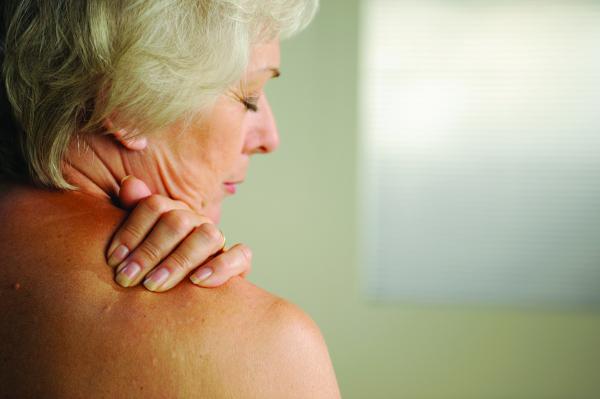
Thoracic outlet syndrome (TOS) refers to a group of disorders that happen due to the compression or irritation of the blood vessels or nerves as they pass through the thoracic outlet. This can make your fingers feel numb and your shoulders and neck hurt. People of all ages and genders can experience thoracic outlet syndrome, but it is most common among athletes playing baseball, volleyball, and other sports that require repetitive motions of the arm and shoulder. Neurogenic TOS is the most common type of TOS and is characterized by compression of the brachial plexus. It is a network of nerves that control the arm and hand muscles. The symptoms of TOS include pain or discomfort in the arm, hand, shoulder, or neck; coldness or discoloration in the arm or hand; and weakened grip strength. Treatment options for TOS may include medication, physical therapy, and surgery to relieve pressure on the affected blood vessels or nerves.
Key Services:
TMJ and jaw pain

Temporomandibular Joint Disorder, more commonly referred to as TMJ, affects the jaw muscles and joints connecting jawbone to skull. TMJ may result in pain in jaw, face, neck and ears.
TMJ symptoms typically include jaw pain or stiffness, clicking or popping noises when opening or closing the mouth, difficulty chewing or speaking, and headaches. TMJ may also cause temple, cheek, and lower jaw tenderness as well.
There are various approaches available to manage and alleviate TMJ symptoms and jaw pain, from lifestyle changes such as avoiding hard or chewy foods, relaxation techniques, and physical therapy that includes stretching and strengthening exercises for the jaw, neck, and shoulders may also prove useful.
As with other treatments for TMJ disorders, options available to those suffering include dental appliances like splints or mouthguards to help decrease teeth grinding or clenching; medications to relieve any associated pain or inflammation; and in extreme cases surgery may be required.
TMJ syndrome can lead to jaw pain and discomfort, making life more challenging than necessary. Understanding its causes and finding appropriate treatments may help individuals manage symptoms effectively and enhance their quality of life.
Key Services:
Upper and lower back pain

Upper and lower back pain are two conditions that can create both temporary discomfort and chronic suffering.
Upper back pain typically arises between the shoulder blades or in the neck and can be brought on by improper posture, repetitive motions, muscle strain or injury, or spinal disorders such as herniated discs, or osteoarthritis.
Lower back pain, on the other hand, is far more frequent and may be caused by any number of factors including muscle strain, injury, disc issues and sciatica. Poor posture, obesity and sedentary lifestyles can all play a part in contributing to lower back discomfort.
Chronic back pain can result from multiple physical, emotional, and environmental factors. Treatment options for chronic back pain depend on its cause, and may include physical therapy, medications, chiropractic care, acupuncture or surgery. Lifestyle changes like exercise, weight management or stress reduction techniques may also prove helpful in managing chronic back pain.
Upper and lower back pain are serious conditions that can be debilitating, often resulting in chronic discomfort and impairment of quality of life. Understanding the cause and seeking appropriate treatments are keys to effectively managing them and improving quality of life.
Key Services:
Vertigo and Dizziness

Vertigo and dizziness are common symptoms that may be related to various brain-related causes. Your brain receives and processes information from various sensory organs in your body such as ears, eyes, muscles, and nerves - any damage or dysfunction in these areas could cause vertigo and dizziness symptoms.
Vertigo and dizziness related to the brain often stems from an issue with the vestibular system, an inner ear network designed to maintain balance and spatial orientation by helping maintain equilibrium and spatial awareness in our lives. When its functioning is altered or impaired it can lead to vertigo - an uncomfortable sensation of spinning or whirling - dizziness, and nausea as a result.
Migraines can lead to dizziness and vertigo as well as visual disturbances and tingling sensations; strokes that affect the cerebellum (part of the brain that controls balance and coordination), which is also capable of producing vertigo or dizziness; tumors in the brain can create similar neurological symptoms - vertigo among them.
Vertigo and dizziness related to the brain vary in treatment depending on its source, with medications, physical therapy and lifestyle changes often employed as means of controlling symptoms while improving quality of life. Surgery may sometimes also be necessary in such instances.
Vertigo and dizziness are symptoms that are commonly experienced, often brought on by various brain-related factors. Determining their source is critical in providing effective management and treatment plans.
Key Services:
Weight Loss & Metabolism

Neuro-health plays an integral part in weight loss and metabolism. The brain controls multiple bodily functions, including metabolism regulation, appetite regulation, energy levels regulation, and energy balance regulation; any damage or dysfunction to this region of the brain could lead to weight gain and metabolic problems
Exercise has been found to enhance neuro health by increasing blood flow to the brain and encouraging its creation, leading to enhanced cognitive functions and regulation of appetite and energy levels. Eating foods rich in brain-nourishing nutrients such as omega-3 fatty acids, B vitamins, antioxidants, etc can also promote better neuro health as well as weight loss. Adequate sleep and managing stress levels will help regulate hormones that influence appetite control and metabolism.
Care of our brains through exercise, healthy eating, and stress management can lead to weight loss and improved metabolic function resulting in better overall health and well-being.